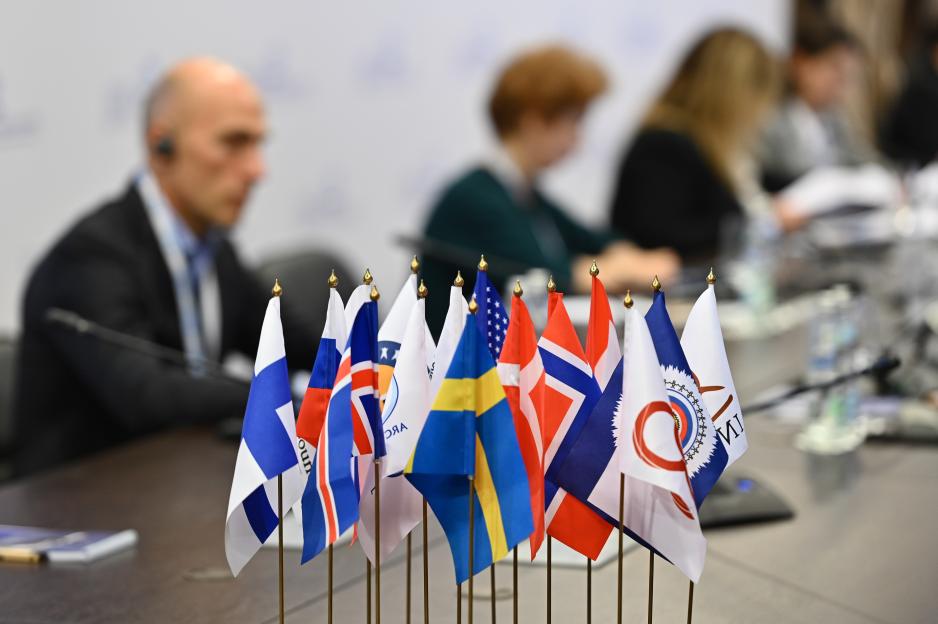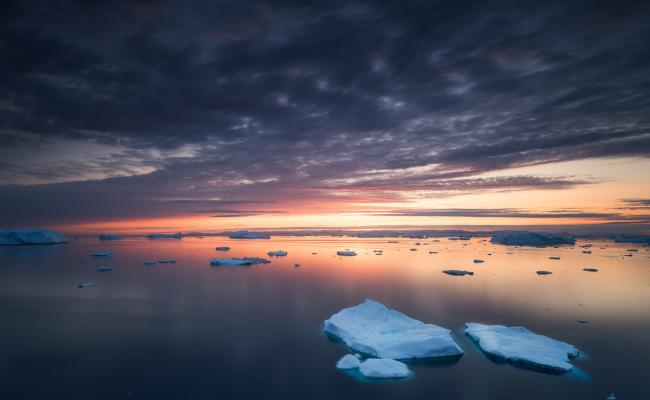Op-ed: Targeting Black Carbon and Methane at the Arctic Council

The Arctic Council must adopt new ambitious targets in order to reduce black carbon and methane emissions, writes Dr. Sian Prior and Andrew Dumbrille from the Clearn Arctic Alliance. (Photo: NTB)
Op-ed: The Clean Arctic Alliance is calling for the Arctic Council, under Norway’s leadership, to adopt new ambitious targets that will reduce emissions of black carbon and methane, writes Dr. Sian Prior and Andrew Dumbrille in this op-ed.
This is an opinion piece written by external contributors. All views expressed are the authors' own.
Slashing emissions of these two short-lived climate forcers would provide an urgently needed response to the climate crisis, while a 'business as usual' approach will ensure the continued loss of Arctic sea ice and severe climate disruption in the region.
Three years ago, the UN Secretary-General António Guterres warned that “we are on a fast track to climate disaster. Major cities underwater, unprecedented heatwaves, terrifying storms, widespread water shortages. The extinction of a million species of plants and animals. This is not fiction or exaggeration. It is what science tells us from our current energy policies.”
Nowhere are these impacts being felt more strongly than in the Arctic. The 6th Assessment Report from the Intergovernmental Panel on Climate Change predicts “the likelihood and impact of abrupt and / or irreversible changes in the climate system, including changes triggered when tipping points are reached, increase with further global warming. And as warming levels increase, so do the risks of species extinction or irreversible loss of biodiversity in ecosystems including forests, coral reefs and in Arctic regions.”
A 'business as usual' approach will ensure the continued loss of Arctic sea ice and severe climate disruption in the region.
With the Arctic warming now four times faster than the rest of the planet and black carbon emitted in or near the Arctic being five times more potent a climate pollutant than when emitted outside the Arctic, the Arctic Council must act with vigour and ambition.
Arctic Black Carbon Emissions
In 2017, the Arctic Council - the intergovernmental body that promotes cooperation, coordination and interaction among the Arctic States (Canada, Denmark - including Greenland and the Faeroe Islands - Finland, Iceland, Norway, Russia, Sweden, United States) and with Indigenous Peoples agreed an ambitious target to reduce emissions of black carbon (soot).
The council aimed to bring this short lived and highly potent climate forcer down by 25-33 per cent below 2013 emission levels by 2025.
It is now 2025, and under the Norwegian Chair, the Arctic Council is on the verge of locking in a new black carbon emissions reduction target for all sectors in the Arctic.
Setting a new target is crucial for future reduction of black carbon emissions for all sectors in the Arctic, including shipping. According to the Arctic Council’s Arctic Monitoring and Assessment Programme, the 2017 target of cutting black carbon emissions by 25% (compared to 2013 levels) is likely to be achieved by 2025 provided current reduction trends continue.
However, shipping emissions are a different story and have not only failed to reduce in line with the original target but have more than doubled in recent years.
When Arctic Council Ministers adopt a new black carbon reduction milestone this May, it will have profound consequences for decades; failure to agree on a more ambitious target will mean missing an important opportunity to address a potent climate and biodiversity threat. This will have serious implications for the global climate.
This is not fiction or exaggeration.
Beforehand, behind-the-scenes discussions involving technical experts including the Arctic Council’s Expert Group on Black Carbon and Methane (EGBCM) will take place - on January 15 and 17th.
The EGBCM mandate is drawn from the Arctic Council’s 2015 framework for actions on black carbon and methane, and is tasked with providing summary reports on these pollutants and marshalling action and progress to reduce their impact. Its current work plan includes a process to update the current black carbon reduction target.
The global climate crisis has driven more than 2.5 degrees heating in the Arctic. Unprecedented changes, such as the loss of Arctic sea ice, the melting of the Greenland ice sheet, permafrost thawing, rising ocean temperatures, and increasing acidification are occurring at alarming rates.
The reduction in sea ice extent and thickness is driving a social and environmental crisis in the Arctic, which is having repercussions further south. The IPCC’s 2023 AR6 report saw the UN’s climate science panel of experts highlight - with high confidence - that the rise in extreme weather and climate events is intensifying acute food insecurity for Arctic communities.
A realistic Arctic Council response to the crisis facing the Arctic means achieving a cross-sectoral target of somewhere in the neighbourhood of 50% by 2030 and 80% by 2035 from 2013 levels, while the shipping sector will need to reduce black carbon emissions by 75% by 2030 and 95% by 2035.
Shipping Sector Action
The Clean Arctic Alliance proposes a stronger target for the shipping sector due to 20% of shipping’s climate impact coming from black carbo.
Achieving a significant reduction in black carbon emissions by ships can be achieved by simply switching to cleaner distillate fuels and installing diesel particulate filters (which can only be used with cleaner fuels).
This would ensure a 95% or greater reduction in black carbon emissions from ships. As a credible global reference point, the Climate and Clean Air Coalition, convened by the UN Environment Program, has set a target of global black carbon reductions of 80% by 2030.
However, a new Arctic Council target alone won’t guarantee reductions - associated measures and solutions need to deliver the targets in the Arctic.
Because of the significant reductions in black carbon emissions that can be achieved by switching ships away from heavy fuel oil (HFO) to cleaner fuels, the defining of polar fuels and mandatory use of distillate fuels should be a first priority - followed by the installation of Diesel Particulate Filters (DPFs).
Other measures will also deliver complementary results - designation of Emission Control Areas (ECAs), a ban on the use of scrubbers which circumvent the global requirement to use low-sulphur fuels, and full and rapid implementation of the Arctic HFO ban.
The Clean Arctic Alliance proposes a stronger target for the shipping sector.
Methane Emissions The EGBCM has a dual mandate; there is a huge urgency to address increasing methane emissions and their impacts in the Arctic
Methane provides 30% of the global climate problem - and emissions are on the rise. Methane impacts are amplified in the Arctic due to melting glaciers exposing large deposits of leaking methane gas. Methane released from thawing permafrost and emitted by industrial sources have led some to describe the situation as a ticking methane bomb.
The Arctic Council must take more concrete action on methane and at the very least align with the Global Methane Pledge (backed by more than 150 countries), and given the accelerated climate impacts in the Arctic aim for a higher ambition striving for reductions of 40% by 2030 from 2020 levels.
Civil society has also initiated a new framework for action on methane which should be supported and championed by all Arctic Council members, the Beyond Methane Pledge focuses on rapidly phasing out methane based Liquefied Natural Gas (LNG) as a marine fuel.
The Arctic Council must take more concrete action on methane.
Both black carbon and methane not only contribute to the worsening of the climate crisis, but also to increased local air pollution and biodiversity loss.
Both pollutants drive Arctic warming, which causes the melting of snow and ice - negatively impacting the Arctic climate biodiversity and food security, while driving climate change in areas outside the Arctic. These emissions also contribute to negative health consequences for communities and increased air pollution.
Reducing emissions of both black carbon and methane is imperative for all sectors, none less than the shipping sector, given that emissions of both methane and black carbon in the Arctic are currently on the increase.
Cutting emissions would give the shipping industry a strong role in the response to the triple planetary crisis by simultaneously addressing climate change, rising pollution, and biodiversity loss.
In May, the Arctic Council must embrace ambitious targets for reducing emissions on short-lived climate forcers, especially black carbon. Doing so will give the Arctic and its peoples a fighting chance for survival. Deliberations and negotiations en route must not compromise the ambition for reduction targets that can do the job.



